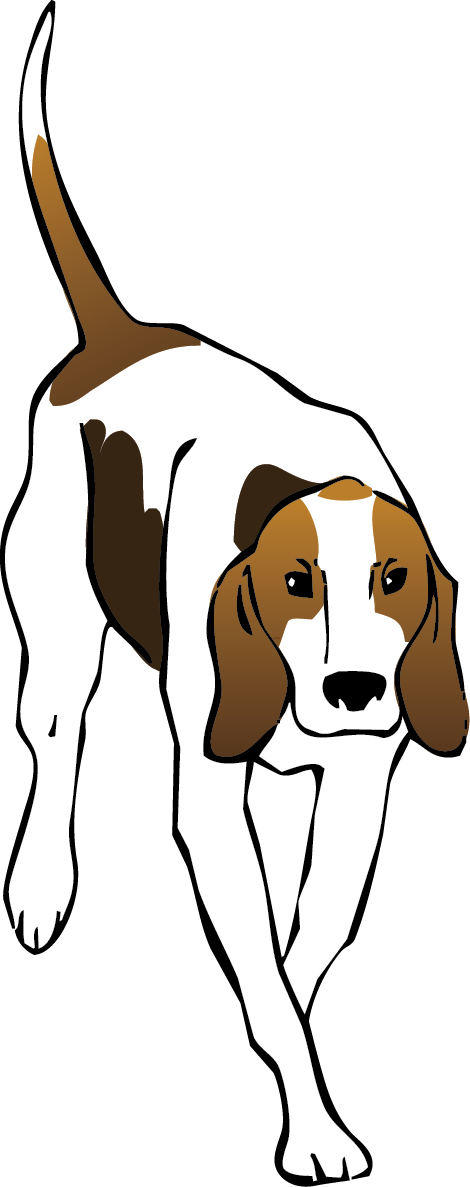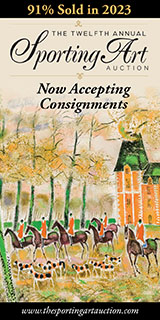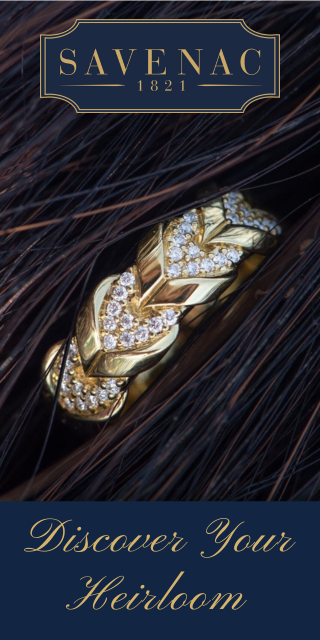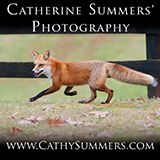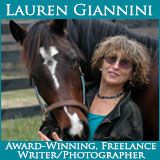“There’s something about horses that makes smart people stupid.” -James Wofford
Our main story in this edition tells in part how foxhunting played a role in helping a teenager become one of the leading young endurance riders in the country. Conversely, we have seen how other equestrian disciplines can help foxhunters get more enjoyment out of hunting by becoming better riders. What follows is extracted from an article we published ten years ago in which Olympian and Coach James Wofford addressed “What Foxhunters Can Learn from Eventers.”
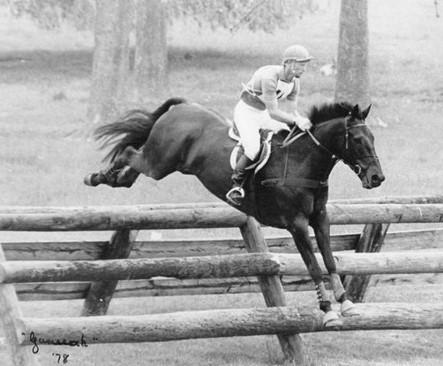 James Wofford on Carawich,1978 / Gamecock photo
James Wofford on Carawich,1978 / Gamecock photo
For most of us field members, one of the greatest single factors influencing the joy we experience during a day’s hunting is closely associated with our riding ability. The more competently we are able to cross the country on our horse, the closer we come to a totally fulfilling experience.
Because the hunting field is so demanding in so many different ways, our guess is that every discipline, from eventing to pole bending, will have something of value to offer. Show jumpers and show hunters derive their roots from foxhunting and have developed those skills to an art form. Pony Club games such as pole bending and western barrel racing must be based on principles that apply equally to galloping through the woods while dodging trees, rocks, stumps and holes. Endurance riders have expanded our knowledge of fitness and comfort of both horse and rider after hours in the saddle. Dressage riders create supple, balanced, and educated horses that answer to the leg.
Eventers know just a bit about crossing the country, so we asked instructor, team coach, author, and Olympic medalist James Wofford to discuss some of the principles of his particular discipline and how they might be applied to the hunting field.
FHL: “Do foxhunters have something to learn from eventers?”
Jim Wofford: “In the 1970s and 1980s, Badminton was the best event in the world, and everyone wanted to ride there. Everyone was very grateful to the late twelfth Duke of Beaufort for hosting his event, but they wondered why the Master of one of the most famous packs of foxhounds in the world would want to get involved in eventing.
In answer to the question, the Duke said that he had gone to the Olympics in London in 1948. He watched the three-day event and thought, ‘What a lovely education for a foxhunter.’
There is an important point here. He used the term ‘education,’ the keyword! Foxhunters are the worst in regard to education. Many times, they don’t even know that improvement is necessary. They tend to just jump on a horse and go foxhunting. They view the horse as an educated foxhunter, and all too often it’s not. In many instances, it’s a menace to society!
How can we make our horse more educated, and thus safer and easier to ride? One thing the foxhunter can do is start out by walking up and down hills. Make your horse stay in a straight line, both going up and coming down. When you are going uphill, stand up in your stirrups. When you are going downhill, you should practice keeping your leg in front of you. Cross-country riders should worry about their lower leg if they want to be balanced going downhill. Not many people fall off over their horse’s shoulder when their stirrup leather is in front of the vertical.
After you feel confident doing this at the walk, repeat it at the trot. You should still insist that your horse stays straight, and does not slow up or slow down. Due to the load on the horse’s forehand cantering downhill, I rarely ask my horses to do much cantering downhill. I find that if I have done my homework at the walk and trot, they are better balanced and stronger at the canter when going downhill.
If you will practice these exercises a couple of times a week, you will find both you and your horse will be fitter and more balanced. The work up and down hills is an excellent exercise for developing muscle and balance in your horse, and the exercises of standing in the stirrups up and down hill and posting without stirrups will go a long way towards improving your fitness and balance.”
Let’s talk about jumping obstacles. Many foxhunters are reluctant to gallop to their fences. They break back to a trot, which may be a smart thing to do in trappy situations, but it can slow the entire field up in good country. Are there exercises you can suggest to help foxhunters develop more confidence in jumping at the gallop?
That depends on several factors: how keen are they, how experienced are they and their horse, and what is their tolerance for risk? Certainly, there’s less risk jumping at the trot than at the gallop, but the danger in slowing to a trot in front of all your fences may cause you to get left behind and miss the day of your life—the best run in recorded history!
To practice, you need to find a place where you can canter to an obstacle and continue after the obstacle at the canter—probably over a familiar panel with a clear approach and exit. I’ll often take two rustic standards and rustic rails into a mowed field. An eighteen-inch vertical is all you need at first. Trot over it back and forth, then canter over it in both directions, gradually increasing both the height of the obstacle and the speed of the canter.
It’s wrong to say a foxhunter needs to be able to gallop at speed over obstacles, but, yes, it’s a useful skill for a rider to have… and practice. At some point, the rider may need to practice with a professional trainer.
One thing I’ve noticed is that foxhunters tend to worry way too much about getting the horse to the right ‘spot’ to jump the obstacle. I want any rider approaching any jump to concentrate on rhythm. They should concentrate on how they get there, not where they get to.
Using the same practice field, start cantering one hundred feet or so back from the obstacle, and count strides out loud: ‘1, 2, 3, 4, 5, 6…’ up to however many strides it takes. The emphasis should be on maintaining a steady rhythm. Next, go on a bit faster, counting strides again and maintaining a steady rhythm.
An added exercise is to gallop on after the obstacle, counting the same number of strides that you counted in the approach while maintaining the same rhythm.
What would you tell foxhunters about their position in the saddle approaching the fence?
Ride to the fence in a two-point seat or with the sitting bones lightly in the saddle. Some horses will go well in a two-point; some need the rider sitting rather defensively. Adjust your stirrup leathers so that the tread of the stirrup hits you at, or just below the ankle bone when you let your legs hang straight down. This will probably be shorter than you are used to, which probably means you have been riding too long.
The main thing to concentrate on when jumping is to establish a rhythm. Sit still, shut up, and let the horse jump. Don’t ride for a spot. Yes, riding to a spot is a neat skill, but it’s an experiential skill. Asking a rider to place the horse to a specific spot in front of the fence has the same degree of difficulty as asking the rider to do flying changes every other stride.
How about the release over the fence? We see everything from following hands to a crest release, to the reins being dropped entirely over the fence.
My old U.S. Team coach, Jack LeGoff, had a French rhyme he used. The English translation is roughly: ‘The greatest weight that the horse must bear is the weight of the rider’s hand in the air.’
The point is, jump on the softest rein you can arrange. Horses are quite sensitive in their mouths when jumping; that’s the moment they feel quite exposed.
I don’t use the term release in my own teaching. The crest release was developed as a training technique, but too many riding instructors have made it into a be-all and end-all. Probably most foxhunters should ride on the softest rein possible or on a loose rein. However, when you’re on a loose rein, you’re just a passenger. A good rider is never a passenger.
But following other horses over fences, we might not be able to go on a light rein.
I worry about that. A horse on a tight rein can lose initiative. I don’t like to see horses lose their initiative. I like the horse to go on self-carriage to the greatest extent possible, but there are times when you have to take a hold.
In that situation, what does the rider do over the fence?
The idea is to maintain the same following contact, but as lightly as you can.
Let’s talk about conditions. What can foxhunters learn from eventers in adjusting to varying conditions of footing?
Eventers use adjustable screw-in calks.
Is that practical for foxhunters? They’re a pain to use, aren’t they?
My wife, Gail, hunted for nearly forty years and went out in screw-in calks all the time. Most farriers can do it quite easily. Yes, it’s a pain—it takes more maintenance, more knowledge—but it’s the real answer.
There’s something about horses that makes smart people stupid. They do things on their horses and with their lives that they wouldn’t dream of doing in any other aspect of their lives.
Adjustable calks come in different sizes and shapes, but foxhunters would probably need just two sizes—‘little road studs’ and ‘big road studs.’ This is where the higher maintenance aspect comes in; the calks should not be left in. They should be removed after hunting and the holes plugged with cotton plugs. If kept clean, studs can be changed reasonably quickly from flat to a good grip.
Gail exercised without calks mostly. In slick or greasy hunting conditions, she used the little road studs. In mud or deep-going, she used the big road studs. Borium is a good second choice, but I don’t like anything that protrudes out of the horse’s foot all the time, because it tends to make the horse footsore.
What else do eventers do to meet different conditions crossing the country?
I train riders to change their position when conditions change. For example, ride with a more erect position in mud or slick conditions. Another variation is that the placement of the foot in the stirrup should vary according to conditions.
Most of the time, the rider has the ball of the foot on the tread of the stirrup. But if it’s slick the horse might slip or stumble, and the risk of losing a stirrup increases.
As speed increases, and as conditions become more unpredictable, I’ll have the riders move their feet deeper into the stirrup—many times until the foot is all the way home in the stirrup. That reduces the chance of losing the stirrup.
Mightn’t that work against the rider? Isn’t there an increased danger of getting the foot caught in the stirrup?
Not if the stirrup fits correctly. You do see too-narrow stirrups used by many riders, but that’s a whole other safety discussion. Losing a stirrup is a good start to falling off, and falling off is a good way to get hurt and lose the hunt.
Conditioning is a big part of the eventer’s preparation. Would you comment on conditioning—both for the horse and rider—for the foxhunter?
Sir John Hislop, one of the premier race riders in the 1930s, wrote a great book on steeplechasing. In it was a quote that resonated with me, where he said that the jockey’s greatest defense against injury is his physical fitness. [Steeplechasing by John Hislop, illustrated by John Skeaping, Hutchinson,1951]
What do eventers do? Some really work at fitness; others just ride every day. But I believe that all the extra exercise that a person can do is good. For the ladies, in particular, I recommend light weight training to improve upper body strength. Sitting against the wall to strengthen the quadriceps is one of my favorites for all riders. Another is to have riders post at the trot without stirrups.
Riders that do anything at all will be better off for it. And if they do anything at all, they will be unusual!
What other aspects of eventing would foxhunters benefit from?
I think foxhunters could benefit from the structured and organized nature of the eventers’ preparation—things like a conditioning schedule and periodic veterinary examinations throughout the season.
Foxhunters start hunting in September, and many horses are lucky if they’ve been going out since August! Eventers take a more structured and organized approach to their sport.
Fitness is a question of time and preparation. There’s no secret to it. Put in the time. Start slow and build up. Your horses will become more durable. Physical preparation is the best protection against injury for both horse and rider.
Re-Posted July 23, 2021
A three-time Olympian in the Three-Day Event, Jim Wofford is one of the best-known eventing trainers in the world. He trains at his farm in Upperville, Virginia, and travels extensively, teaching and giving clinics. His wife, Gail, is a former MFH of the Piedmont Fox Hounds (VA). His father was a founding member and first president of the U.S. Equestrian Team.
Wofford was a member of the 1968, 1972, and 1980 U.S. Olympic Teams, and holds two Team Silver medals and one Individual Silver medal. In 1970 and 1978 he won Individual and Team Bronze medals in the World Championships. He is a five-time winner of U.S. National Championships. Wofford has raced over fences, ridden in horse shows, and foxhunted for over thirty years.
